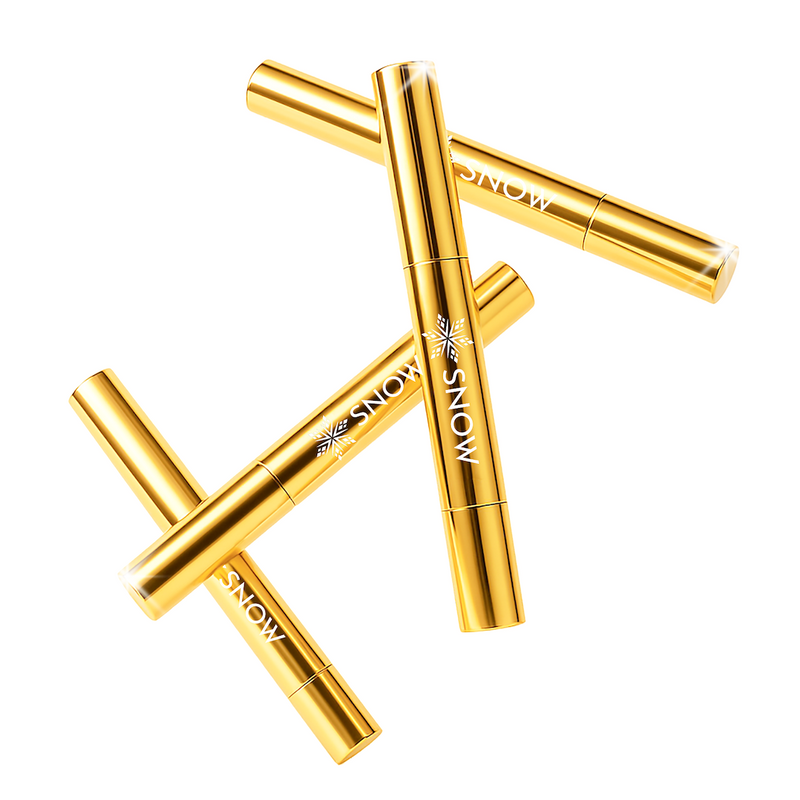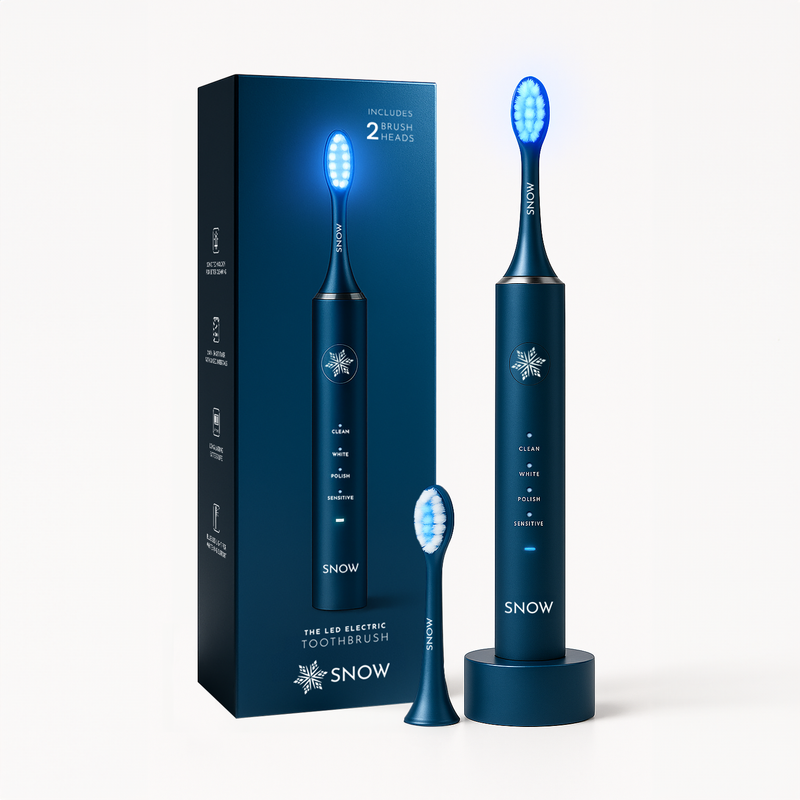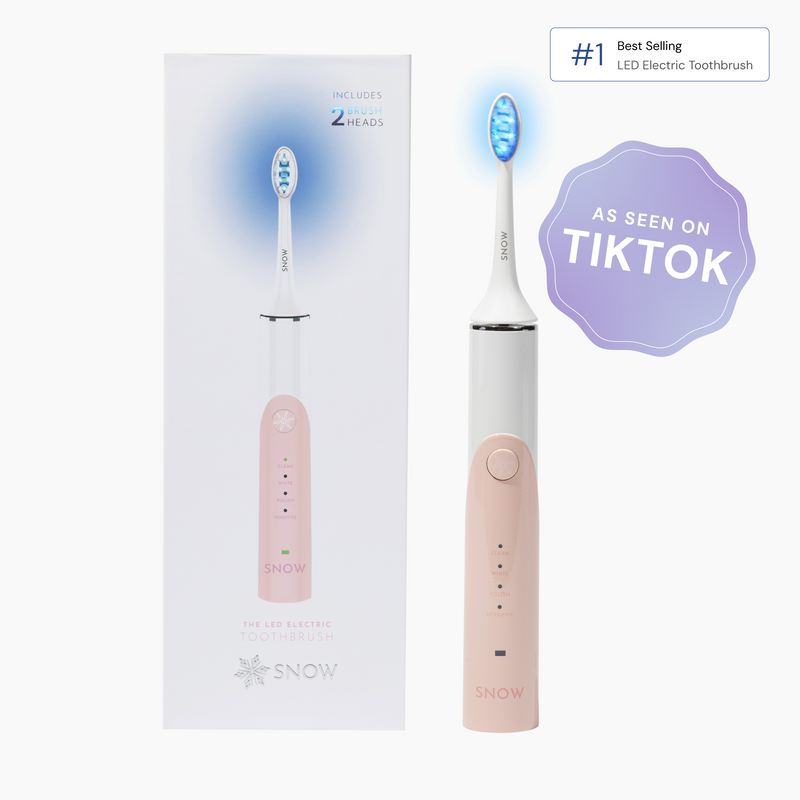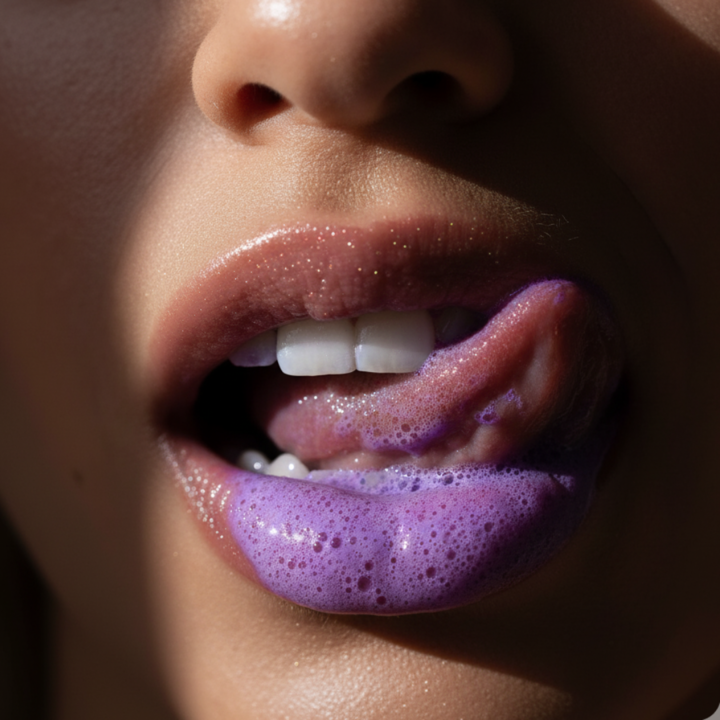Wondering which toothbrushes are best for gum disease? SNOW has the answers! Toothbrush choice plays a vital role in gum health, affecting plaque removal and gum irritation.
In this comprehensive guide, we'll explore the ideal toothbrush types, symptoms of gum disease, and why gum care matters. From manual to electric toothbrushes, we'll weigh the pros and cons, ensuring you make an informed decision for optimal gum health.
Our article covers essential toothbrush features tailored to gum disease management and answers frequently asked questions to address your concerns directly.
With SNOW's expertise in dental health and at-home teeth whitening, you're on your way to a healthier smile and gums.
What this article covers:- What Kind of Toothbrush Works Best for Your Gums?
- What Are the Symptoms of Gum Disease?
- Why Is It Important to Care for Your Gums?
- How to Brush Your Teeth And Gums
- Manual vs. Electric Toothbrushes
- Essential Toothbrush Features for Those with Gum Disease
- Toothbrush for Gum Disease FAQs
What Kind of Toothbrush Works Best for Your Gums?
When it comes to gum health, selecting the right toothbrush is crucial.
SNOW understands the importance of gentle yet effective oral care, which is why we recommend our LED Teeth Whitening Electric Toothbrush. Designed with soft bristles, it ensures a gentle cleaning experience, reducing the risk of gum irritation while effectively removing plaque.
The compact head and soft bristles reach tight spaces, providing thorough cleaning without causing discomfort.
With SNOW's electric toothbrush, you can maintain optimal gum health while achieving a brighter, whiter smile.
Say goodbye to harsh brushing and hello to gentle yet efficient oral care with SNOW's LED Teeth Whitening Electric Toothbrush.
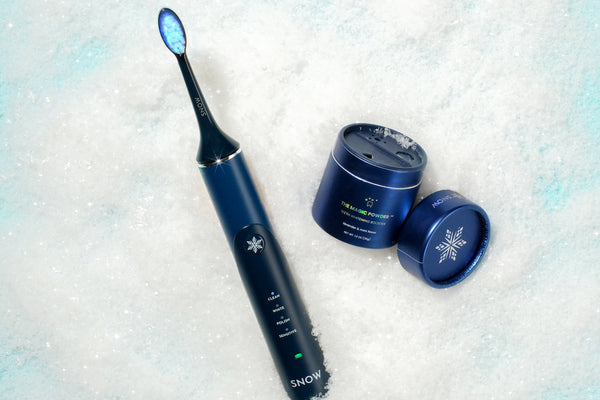
What Are the Symptoms of Gum Disease?
Identifying the symptoms of gum disease is crucial for maintaining optimal oral health.
According to the Mayo Clinic, gum disease, also known as periodontitis, manifests in various ways.
Common indications include swollen, tender, or bleeding gums, which may occur during brushing or flossing.
Persistent bad breath, often despite regular oral hygiene practices, can also signal gum disease.
Additionally, individuals may notice their gums receding, leading to the exposure of tooth roots and increased sensitivity to hot or cold temperatures.
Loose teeth or changes in bite alignment are further indicators of gum disease progression.
Understanding these symptoms empowers individuals to seek timely dental care, preventing further complications such as tooth loss or bone damage.
Swollen, Tender, or Bleeding Gums
Gums that appear red, swollen, or bleed easily, especially during brushing or flossing, may indicate gum disease.
Persistent Bad Breath
Persistent halitosis, despite maintaining good oral hygiene, can be a sign of underlying gum disease.

Receding Gums
Gums that pull away from the teeth, leading to tooth root exposure and increased sensitivity, are indicative of gum disease.
Loose Teeth
As gum disease progresses, the supporting bone and tissues around the teeth may deteriorate, causing teeth to become loose.
Changes In Bite Alignment
Advanced gum disease can result in changes in the alignment of teeth, affecting how the upper and lower teeth fit together.
Consulting with a dentist at the first sign of these symptoms is essential for prompt diagnosis and appropriate treatment.
Why Is It Important to Care for Your Gums?
Caring for your gums is fundamental for preserving both your oral health and overall well-being.
According to WebMD, neglecting gum health can have severe consequences, extending beyond dental issues. Here's why prioritizing gum care is essential:
- Preventing Tooth Loss: Gum disease, if left untreated, can progress to periodontitis, leading to tooth loss. Healthy gums provide crucial support to your teeth, keeping them anchored in place and preventing premature loss.
- Reducing Systemic Health Risks: Gum disease is associated with an increased risk of developing systemic health problems such as heart disease and diabetes. The inflammation caused by gum disease can affect other parts of the body, contributing to the onset or worsening of these conditions.
- Enhancing Overall Well-Being: Maintaining healthy gums contributes to a lifetime of healthy smiles and overall well-being. Healthy gums promote proper chewing function, aiding digestion and nutrition absorption. Additionally, a confident smile boosts self-esteem and enhances social interactions.
By incorporating proper oral hygiene practices, such as regular brushing, flossing, and professional dental cleanings, you can safeguard your gums and enjoy the benefits of a healthy smile for years to come.

How to Brush Your Teeth and Gums
Ensuring you brush your teeth and gums correctly is paramount for maintaining optimal oral health and achieving a brighter smile.
Here's a step-by-step guide from SNOW:
- Positioning The Brush: Hold the toothbrush at a 45-degree angle towards the gum line. This angle allows for effective cleaning of both the teeth and the gum line, targeting plaque and bacteria buildup.
- Gentle Circular Motions: Use gentle circular motions rather than harsh scrubbing to clean your teeth and gums thoroughly. Circular motions help dislodge plaque and debris while being gentle on the gums, preventing irritation and damage.
- Brushing Duration: Brush your teeth for at least two minutes each time you brush. This duration ensures thorough cleaning of all tooth surfaces and reaches areas that are often missed. Set a timer or use a toothbrush with a built-in timer to ensure you brush for the recommended time.
- Frequency: Aim to brush your teeth twice a day, preferably in the morning and before bed. Brushing after meals is also beneficial, especially if consuming acidic or sugary foods that can contribute to enamel erosion and decay.
- Replacing Your Toothbrush: Regularly replace your toothbrush or brush head every three months, or sooner if the bristles become frayed. Worn-out bristles are less effective at cleaning, and using an old toothbrush can harbor bacteria, compromising oral hygiene.
By following these simple yet crucial steps, you can ensure your at-home teeth brushing routine is effective in maintaining both your oral health and the brightness of your smile.
Manual vs. Electric Toothbrushes
When it comes to choosing between manual and electric toothbrushes, SNOW understands the importance of selecting the right tool for optimal teeth whitening and gum health. Let's delve into the advantages and disadvantages of each option:
Electric Toothbrush Advantages
Efficiency: Electric toothbrushes offer consistent and controlled movements, ensuring thorough cleaning without exerting excessive pressure on the gums, contributing to better gum health and whiter teeth.
Built-in Timers: Many electric toothbrush models feature built-in timers to encourage brushing for the recommended duration, promoting optimal oral hygiene and enhancing teeth whitening results.
Effective Plaque Removal: The oscillating or vibrating bristle movements of electric toothbrushes enable them to reach areas that are difficult to clean with manual brushing, resulting in more effective plaque removal and brighter smiles.

Electric Toothbrush Disadvantages
Cost: Electric toothbrushes typically come with a higher upfront cost compared to manual toothbrushes, although they may offer long-term benefits for gum health and teeth whitening.
Maintenance: Some electric toothbrushes require charging or battery replacement, adding to the overall maintenance cost and effort.
Manual Toothbrush Advantages
Accessibility: Manual toothbrushes are widely available and cost-effective, making them accessible to individuals with various budgets.
Control: With a manual toothbrush, you have full control over the brushing pressure and technique, allowing customization based on individual preferences and ensuring effective teeth whitening and gum care.
Manual Toothbrush Disadvantages
Technique Dependency: Proper technique and consistent pressure control are essential when using manual toothbrushes to avoid gum irritation and ensure effective plaque removal, requiring a level of skill and attention during brushing.
By weighing these factors, individuals can make an informed decision based on their preferences, budget, and oral health needs.
Essential Toothbrush Features for Those with Gum Disease
When it comes to managing gum disease effectively, SNOW recommends paying attention to specific features in a toothbrush to support your oral health journey.
Let's explore these essential features:
Toothbrush Head
Opt for a toothbrush with a small, compact head to reach all areas of the mouth easily, including those challenging spots where plaque tends to accumulate. This ensures thorough cleaning and contributes to gum health maintenance.
Bristles Quality
Choose toothbrushes with soft, rounded bristles to minimize irritation and protect sensitive gums. Gentle bristles are crucial for individuals with gum disease as they help prevent further inflammation and discomfort while effectively removing plaque and debris.
Toothbrush Handle
Look for toothbrushes with ergonomic handles that offer a comfortable grip, ensuring proper handling and control during brushing sessions. This feature enhances maneuverability and reduces strain on the hand and wrist, making the brushing experience more enjoyable and effective.
ADA Approved
Select toothbrushes endorsed by the American Dental Association (ADA) for assurance of safety and effectiveness in maintaining oral health. ADA-approved toothbrushes meet rigorous standards for quality and performance, providing peace of mind for individuals with gum disease.
By prioritizing these essential features, individuals with gum disease can choose a toothbrush that supports their oral hygiene efforts and promotes gum health effectively.

Toothbrush For Gum Disease FAQs
Do toothbrushes cause gum recession?
No, toothbrushes do not directly cause gum recession. However, aggressive brushing with hard-bristled brushes or improper technique can contribute to gum recession over time.
Will an electric toothbrush help prevent gum Disease?
Yes, electric toothbrushes can help prevent gum disease by effectively removing plaque and bacteria from the teeth and gums, especially when used in conjunction with proper brushing techniques and regular dental check-ups.
Is an electric toothbrush worth it?
For individuals seeking optimal gum health and plaque control, investing in an electric toothbrush may be worthwhile. While the initial cost may be higher, the long-term benefits for gum health and overall oral hygiene justify the investment.
Conclusion
As we reach the end of our toothbrush exploration, remember the key features for managing gum disease: a compact head, soft bristles, an ergonomic handle, and ADA approval.
These factors contribute to effective oral care, promoting gum health and preventing further issues. When it comes to enhancing your dental routine, consider SNOW's LED Teeth Whitening Electric Toothbrush.
Its advanced technology not only supports gum health but also complements your teeth whitening journey. Elevate your oral care with SNOW's innovative toothbrush, and embrace a brighter, healthier smile.
If you want to learn more, why not check out these related posts:
- Toothbrush for Sensitive Gums
- Best Electric Toothbrush for Gingivitis
- Best Electric Toothbrush for Gum Care
- Best Electric Toothbrush for Receding Gums
- Electric Toothbrush Smells Bad
- Best Toothbrush for Bad Breath
- When to Change Toothbrush After Being Sick
- How to Clean Electric Toothbrush
- Does Electric Toothbrush Clean Better?
- Can Your Toothbrush Make You Sick?
- How Often Should You Change Your Toothbrush?
- When to Change Toothbrush After Strep
- Electric Toothbrush Hurts My Teeth
- Gums Hurt After Brushing with New Toothbrush
- Best Toothbrush for Plaque

















































